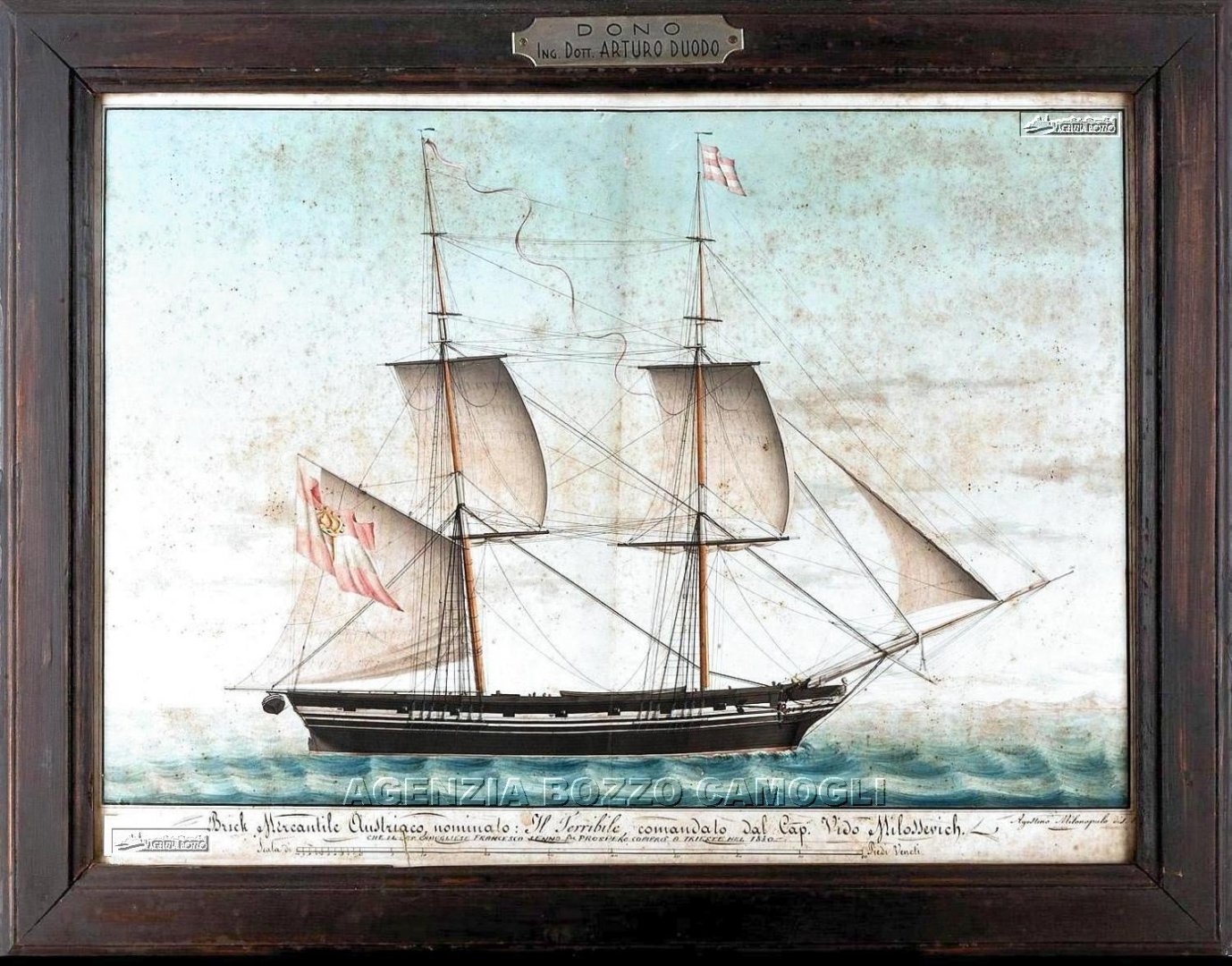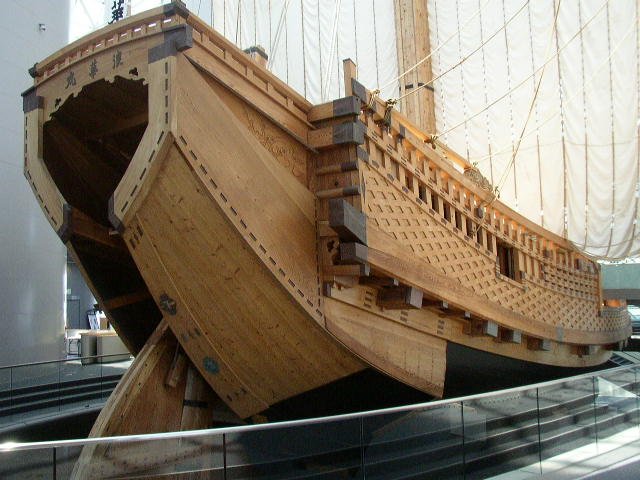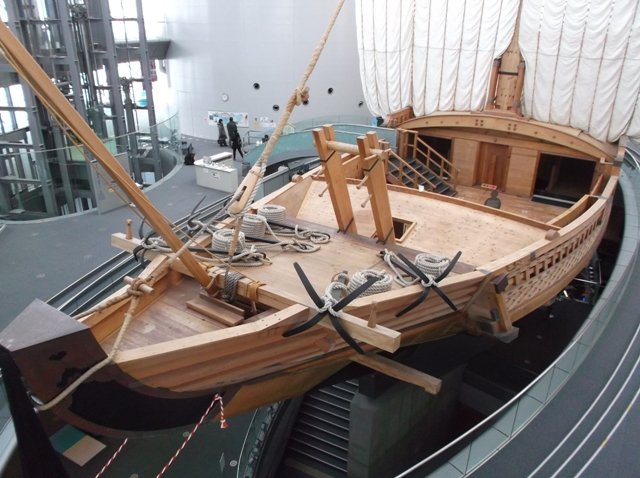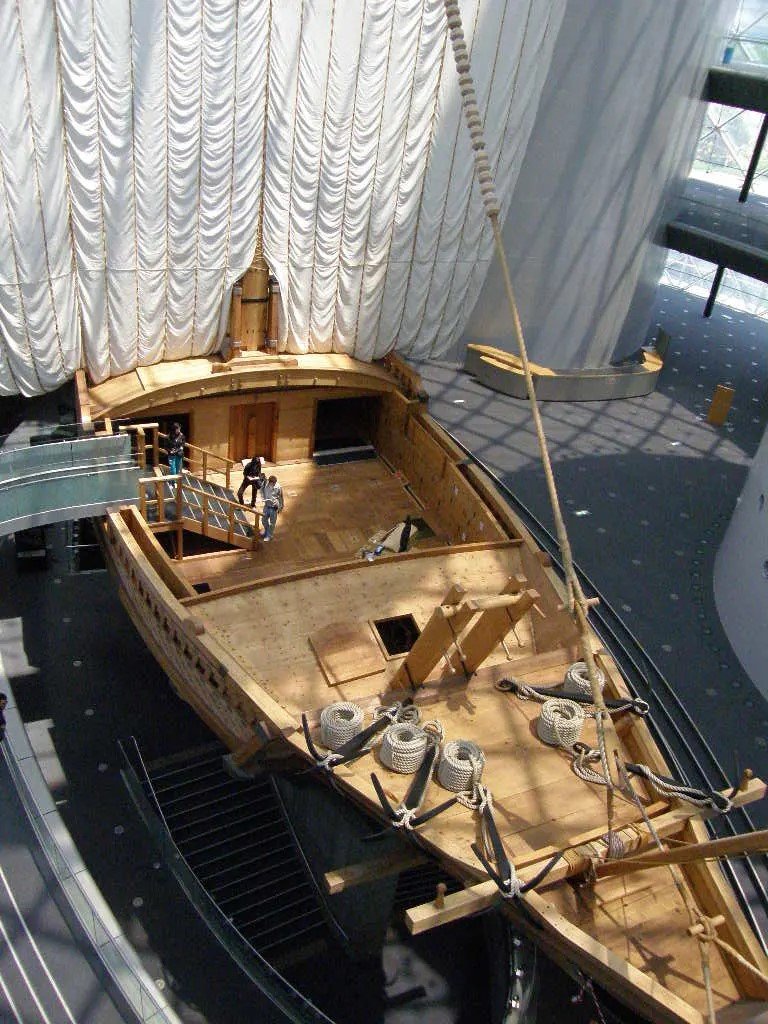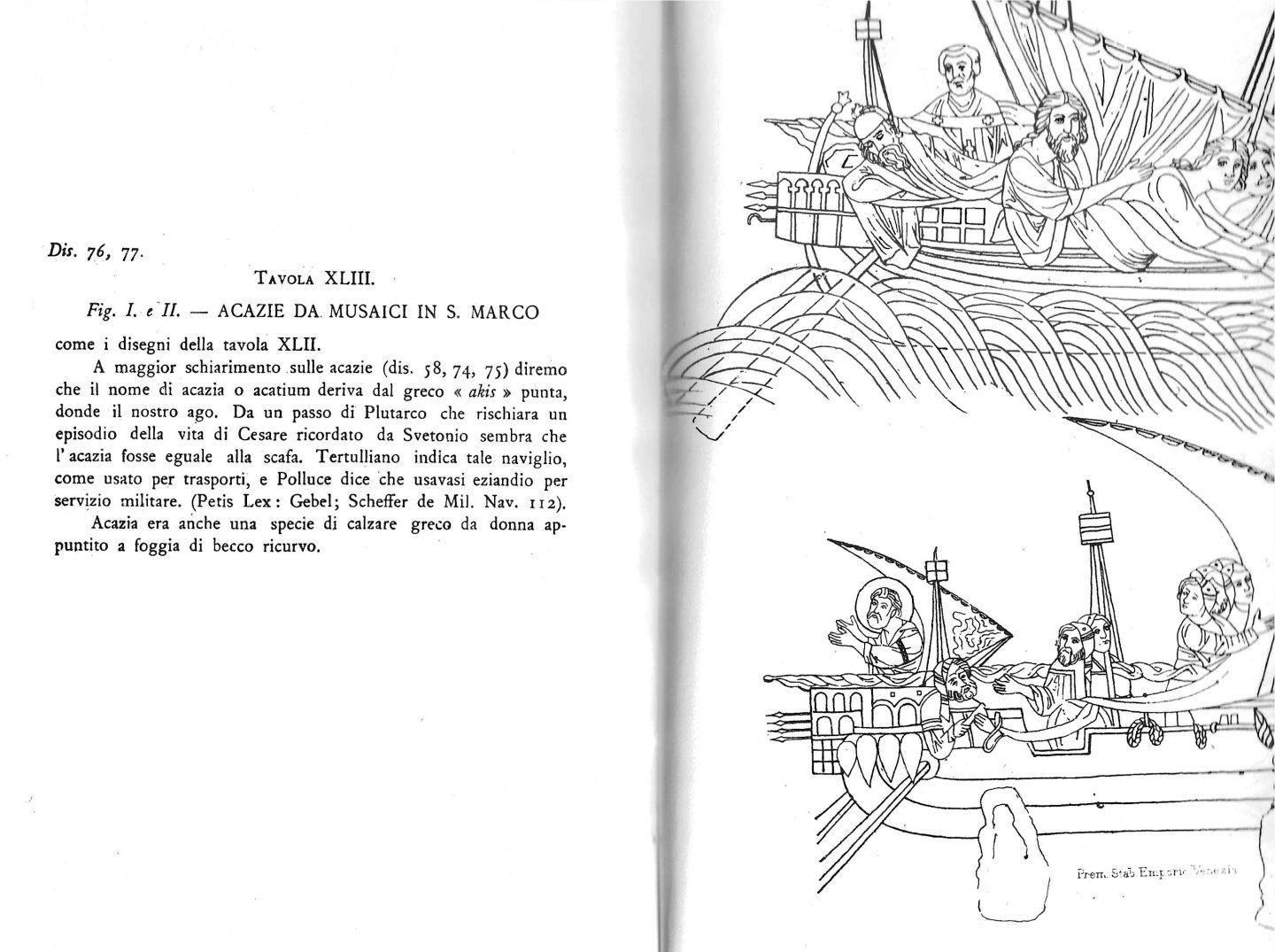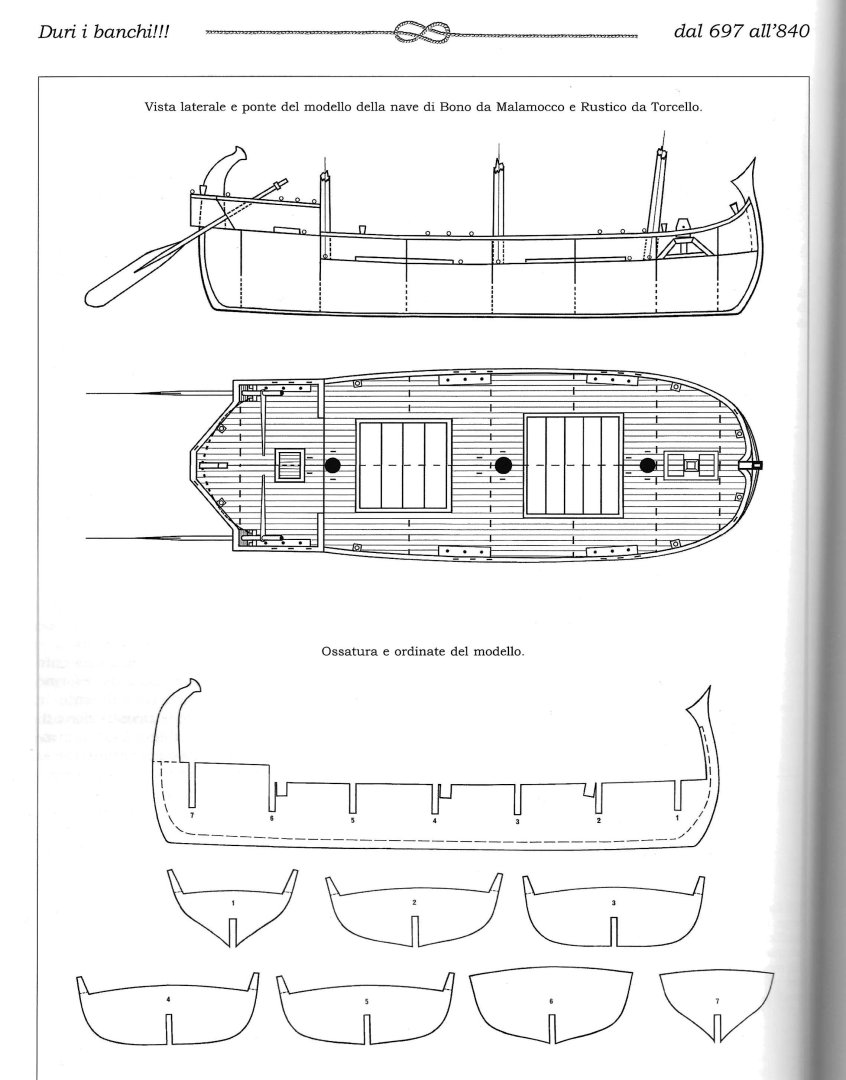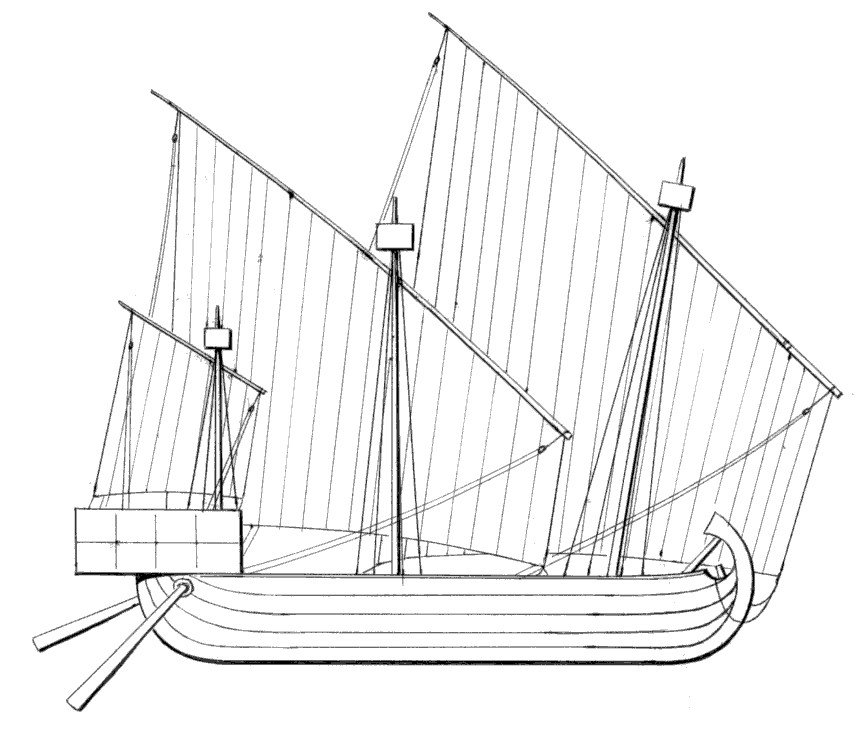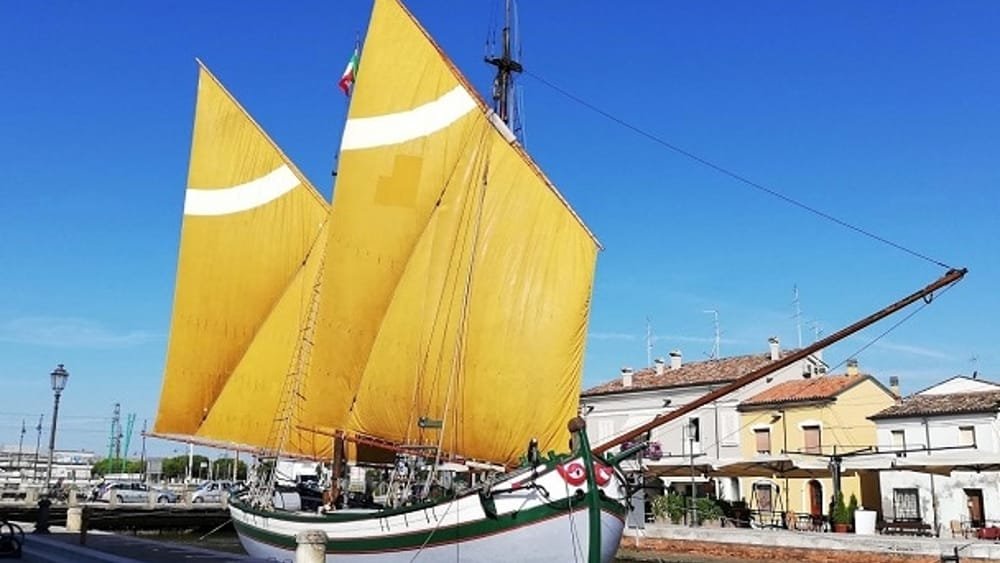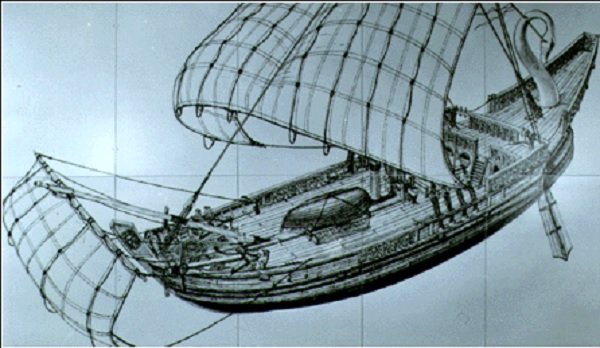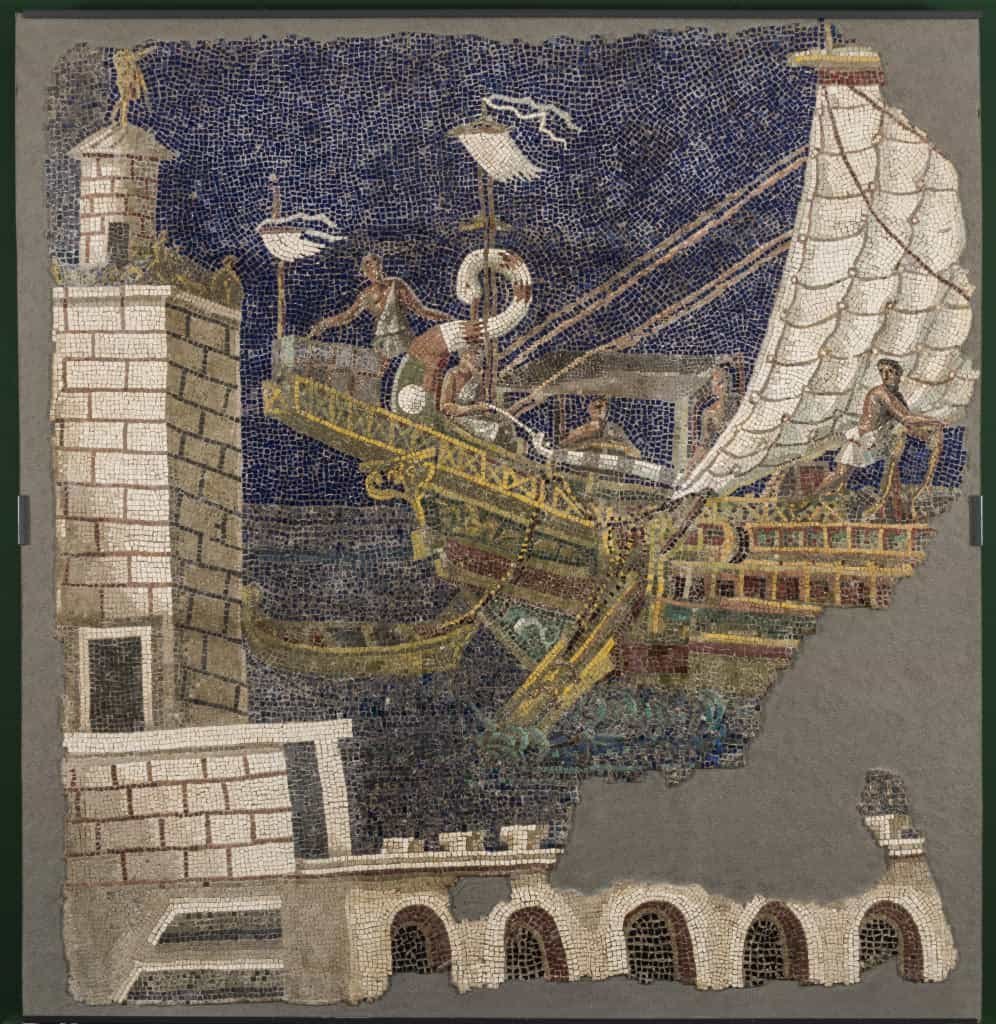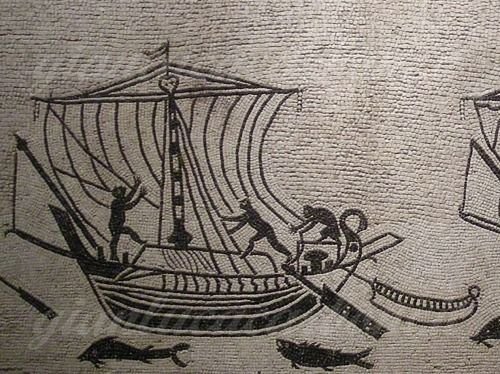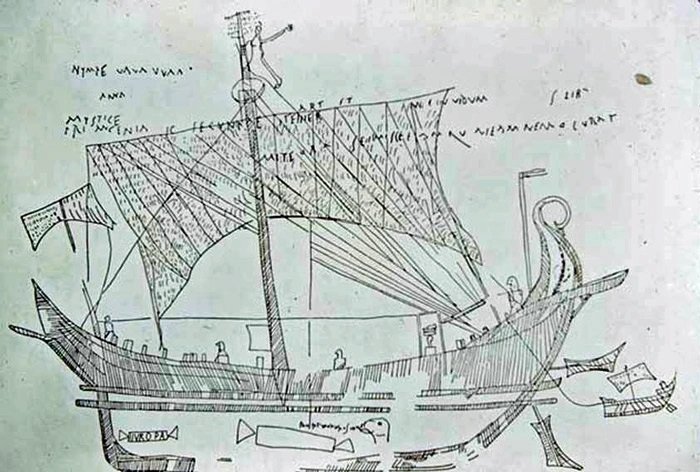-
Posts
423 -
Joined
-
Last visited
Content Type
Profiles
Forums
Gallery
Events
Everything posted by Cristiano
-

Italian Boats of the Adriatic Sea
Cristiano replied to jack.aubrey's topic in Nautical/Naval History
It seems that it is (or it was) a kit manufacturer from Czech Republic. But it was specialized in plastic kit or resin kit. See below an example of its kit. It seems that another name is PAVLA MODELS. Too few informations for purchasing a kit, in my opinion. -
Hello Bogdan, you have made a very good work, don't be too hard on yourself. Consider that finishing the hull, you have finished the most complex part of your model. The level of completion of the rigging depends only by you, but keep in mind that your model is of a small size and cannot fit everything that "theoretically" is needed on these type of sails. Probably Amati has made some simplifications too.
-
Dear Waldemar, you are making a true masterpiece of work, considering that the ancient Italian language can be sometimes a challenge even for an Italian. Regarding the never translated Dudley's book, eventually the matter can have some connection to his troubled past in England. I looked at the history of his troubles in his native nation and were very complex: basically he almost flee to Italy: https://en.wikipedia.org/wiki/Robert_Dudley_(explorer) In anycase the book was initially self-published, so it is possible that without the support of the scientific community in his homeland, it's unlikely that such a book could have been translated into English. He was practically an outcast in his homeland. However, that book is considered the first nautical atlas ever published in the world, so at least he got credit for that.
-
Sad update for this ship future.... https://apnews.com/article/historic-ship-artificial-reef-philadelphia-florida-gulf-818c44d7f3078c4ffa3b8aa39f3329ed Below a very detailed article about its troubled life with its various owners. It is italian written, but Google translate make miracles... https://rollingsteel.it/lo-united-states-il-transatlantico-piu-veloce-di-sempre-sta-per-essere-affondato/
-

Help identifying anything about this ship?
Cristiano replied to tula's topic in Nautical/Naval History
Are you sure that the ship belong to Spain or new world? to me it seems an Austro-hungaric flag: the flag colour seems more Red/white than red/yellow... like that type of ship portrait (just an example, it is not the same ship) In anycase, it is rather impossible to identify the ship: too small in terms of size and too common in that historical period. In addition, to me the painting appears a ship portrait, so usually it was the only visual information existent about a ship. -

Ancient galley rams discovered - photos
Cristiano replied to Louie da fly's topic in Nautical/Naval History
Some of the recovered rostrums were considerably larger than the others and are assumed to have belonged to quinquiremes. In the latter part of the First Punic War the Romans financed the accelerated construction of 200 quinquiremes, to rebuild their decimated fleet. The Romans employed 300 to 350 ships in the battle, so it is assumed that a significant presence of quinquiremes derived from the 200 recently built. Just to complete what Wefalck wrote: The corvus bridge was used only in the Punic Wars, because it was excessively heavy and unbalanced the ships at sea, being about 10 meters long and with a hypothesized weight of around 1000 kg. After the Punic Wars, the Corvus bridge was no longer mentioned in any document. It was later replaced by the Harpagon, to be launched with ballistae. -

Ancient galley rams discovered - photos
Cristiano replied to Louie da fly's topic in Nautical/Naval History
Another galley's ram found in the site of the Egadi's naval battle....now we are at 27 rams found! Not anymore rare artifacts... https://tg24.sky.it/cronaca/2024/08/23/rostro-romano-battaglia-egadi Article is italian written, but can be easily translated by google... -

Kit review Belle Poule - Occre - 1/90 - review by kevin
Cristiano replied to Kevin's topic in REVIEWS: Model kits
Thanks to everybody for the suggestion of the copper tape (which already had used in the past), but the sense of my comment was of a different meaning: since this type of ship needed almost surely a layer of copper sheets, why don't put it already inside the box? An answer is not strctly needed... -

Kit review Belle Poule - Occre - 1/90 - review by kevin
Cristiano replied to Kevin's topic in REVIEWS: Model kits
This kit appears a very good one, considering the presence of a very detailed instruction manual too. The historical period chosen is interesting, post-Napoleonic. My only doubt is related to the absence of the copper sheets for the hull. Probably is considered a very expensive accessory to be included in the kit. These types of ships already had copper hull cladding so the modeller is forced to purchase the sheets apart if he want to complete the model. -
it seems that the above cited ship's replica is rather famous in Japan. Probably there aren't many studies about those type of ships. So it is the most proposed example, commercially. I just found that exist a wooden kit of it! below an example of a link to a online shop where the kit is sold (the eternal Amazon): https://www.amazon.ca/Woody-Joe-Higaki-Kaisen-Wooden/dp/B00B8HVAL2 Below a review of the kit : https://wasenmodeler.com/2013/11/25/initial-thoughts-on-woody-joes-higaki-kaisen/ Below the construction of the model INSIDE THIS FORUM:
-
Maybe you can try to find more informations and books related to this floating replica that was made more than 20 years ago in Japan: https://en.wikipedia.org/wiki/Naniwa_Maru I remember I read an article about the technics of construction of this vessel, since they used the same ancient technics to build it.
-
Hello Steven! You are building a great model! Since there is some discussion regarding the sails type, I want to share my informations, that I have found in my books. Type of ship In all the sources that I have (Italian sources), the "San Marco ships" are all defined ACAZIE (singular ACAZIA). In some nautical dictionary this type of ship is called also ACAZIO. One of the possible origin of the name is greek: "A type of Greek pointed shoe for women in the shape of a curved beak." The Acazia was a small commercial ship (which later evolved in a medium size) of bizantine origin. It was widely used by the Venetians in their first centuries of their Republic. The type of sails used were different. All the sources write about the fact that the sails used in the origin were latin type and then evolved in squared type. The ACAZIA in the Adriatic sea later evolved in the TRABACCOLO. Some Trabaccoli are still existent as historical ships in the Adriatic sea. Type of sail The images on the San Marco Mosaic present apparently a square sail type. But the sources that I have checked (all Italian sources) make a reconstruction with a trapezoidal type sails (like the Trabaccolo). Sources Below the main sources (but other ones are present in the web, too) https://libreriaeditricefilippi.com/negozio/levi-cesare-augusto-navi-venete-da-codici-marmi-e-dipinti/ This an anastatic reproduction of the original book published in 1892 by Cesare Augusto Levi. The author was an important historician and researcher of the Venetian history. https://www.amazon.it/DURI-BANCHI-DELLA-SERENISSIMA-421-1797/dp/B00O4YDS9S/ref=sr_1_16?dib=eyJ2IjoiMSJ9.CQIl8kQjfcs5H31zAMbEGRDNWdGE1lwAGnQW4QSa6vQkYT-oaKdV7FX-S1mNfB9XNcTWfxCyfFD3Lacj6bj6Vpkwy3H4m1u5pkUErEhzOoEkcVJ5es8JQZn2JCdz5AgmB5i3khbz-AgOQD-4Pi68_nIwXqyoobOsd5vOH1LvT9_xqTSTIh9KVUdUn30ooDZZ0FFVwISx24u_W5c8EGub09fBgJQHvjOBXjqcWUvsHE4.kNycIzatH6oMLZOsFxnKdIvOonpvShMlBbxpAydtfzI&dib_tag=se&qid=1714033030&refinements=p_27%3AGuido+Ercole&s=books&sr=1-16 The author, Guido Ercole has a deep and focused knowledge on the history of the Venetian Navy. He has written several books on that matter. Some of his models are currently on display in the Naval Museum of Venice. https://www.cherini.eu/ The brothers Chierini had made a deep research through their books of the various ships related to the history of the Italian commercial ships during the centuries. The material available in their website is huge and documented by their bibliography. Their website as a source of informations exist till 20 years. The drawings are presented in a more organic way, drawn by one of the brothers. FINAL NOTES @tartane: don't be so absolutist in your evaluations. I don't know your knowledge regarding the history of sailing ships of the Mediterranean basin, but trust me, the matter is very complex. There are few absolute definitions and many exceptions in the history of commercial sailing ships of the Mediterranean basin. the Mediterranean basin has been for millennia the center of exchange of cultures and technologies and the complex situation related to names and types of ships reflects this. The same type of sailing ship can change greatly from Greece to Italy to Spain, but all in the past defined it eventually with the same name. There are several hundreds of type of sailing ships that can be considered in the Mediterranean basin, and some of them eventually differ only by name or sail or minor details. You're right, the ships of the mosaic appears with squared sails, but the history that surround this specific type of ship doesn't follow that path. @Louie da fly: The two odd reinforcement in the bow in my opinion should be kept and have a real purpouse: it is possible that they prevent entanglement of the sail and ropes with the bow during the jibe operations (I don't know the exact term). Images: The reconstruction of the hull of the Acazia of San Marco, from one of the books. An hypotesis of the sails type. Various photos of a Trabaccolo: that one is the "Giovanni Pascoli" and is exposed in a floating museum in Cesenatico - Italy. This is considered the "evolution" of the Acazia, in the Adriatic sea.
- 508 replies
-
if cm is in capital letters (CM), is right. The old sheets of Mamoli kits present some tricky abbreviations for materials. They made acronyms using Italians words, and sometimes not related in anycase to Italian words. So the best way is to check the drawings and see which material can be related and use it for all the matching acronyms. Some example: NO= Noce (walnut) CO=Corda (rope) MET= metallo (metal) OTN=ottone (brass) and so on.
-
I don't have here a sheet of Mamoli ships but usually if related to lenght, cm is a fraction of meter in terms of lenght. 100 cm=1 m = 1000 mm the cm are used often in Italy, but internationally not. Internationally are more often used mm and meters.
-
This happened to me in minor ways with others models. It is possible that this model project is rather old and they never upgraded it. Now the stern costruction is solved by manufacturers with laser cut multiple metal pieces instead of a single cast piece. The original stamp of your model is old and clearly deformed by wearing. Below my suggestions: Stern modification The front of the stern panel must be leaved as it is. You cannot bend with heat, since is fragile metal and not ductile one, so get broken. The rear of the stern can be carved in order to let have a more deep bending in the central part, using a hobby electric drill (the ones with small grinding wheels that can be attached). then you must glue it to the ship (after priming the piece). After is firmly glued, you can use modelling paste like the Kneadatite (called also green stuff) to fill the gaps with the hull and give continuity to the surface. Otherwise the wood filler, but usually it doesn't adhere properly to metal surface. The Kneadatite adhere best to metal. The Kneadatite is a common paste sold in the models shops. is a very common product in the model fields. Stern painting After you have modified it, but before glueing to the hull, cover with black matte primer, better to use a spray one. you can eventually paint with related colors the details internal parts of the stern, leaving only primered the external frame, too. I suggest to use acrylic paint for decoupage, since they contain big pigments and have a better covering capability. After you have glued to the hull and successully filled the gaps with the hull, you can paint the external frame. The paint needs fixing of course. So you must cover with plastic the area surrounding the stern and spray a matte transparent paint. if you have some doubts, feel free to ask. I am Italian, so english is not my mother language. so sorry is something is not explained well.
-

I've lost it....need a refresher to get my confidence back
Cristiano replied to bigcreekdad's topic in Wood ship model kits
I suggest the following kits, by Amati. https://www.amatimodel.com/en/models-amati-classic/product-robert-e-lee-assembly-box-2024-edition-b1439.html?_gl=1*1y7f76j*_up*MQ..&gclid=CjwKCAjw17qvBhBrEiwA1rU9w_ycr4hf1YAwInKylBzFOnaL2uVCYrfPsHXfh41Hk42oM-V6KYhXPBoCfKgQAvD_BwE Classical steam boat Robert E. Lee. the problem of the hull planking is solved, since there is no hull planking at all. otherwise: Pirate chinese junk. https://www.amatimodel.com/en/models-amati-classic/product-chinese-pirate-junk-b1421.html?_gl=1*1xcnvvq*_up*MQ..&gclid=CjwKCAjw17qvBhBrEiwA1rU9w_ycr4hf1YAwInKylBzFOnaL2uVCYrfPsHXfh41Hk42oM-V6KYhXPBoCfKgQAvD_BwE the problem of hull planking is solved here too, since the bow and stern are cut stright due to the specific shape of this ship. -
Of course Joachim, but sometimes there are "small artistic deviations" that I prefer to take to maintain the nice look of the model. Some observers may interpret certain choices (metal parts completely white) as a lack of artistic ability on painting. The black metal parts of the rudder are more nice to the eye...
-
Regarding the mordant, probably is also knew also as "wood stain", available as ready to use or in powder to be blended with water, and so on. the various type of wood colors can be easily found in all the hobby stores. Regarding the white, I usually use the "acrilic paint for decoupage". it appears an odd choice, but it is a type of color that is very efficient in terms of result. The acrilic paint for decoupage contains very big pigments (the opposite of the acrilic paint for plastic modelling), so the covering efficiency is very very high. you cover the wood without the risk to soaking it with the water present in the color. Below is an example of a mine model present in my gallery: All the colored parts are made with acrilic paint for decoupage (whyte, ocra yellow, yellow and black). The masts and bowsprit are "colored" with wood stain (walnut light color) or mordant, the original wood was lime wood. The pedestal, again was lime wood, "colored" with cherry wood stain Unfortunately I am from Italy, so I cannot suggest specifically a label of acrilic paint available in your market, but more or less the equivalent in your country of mine should be the following (Amazon USA link): https://www.amazon.com/Apple-Barrel-Acrylic-PROMOABI-Assorted/dp/B00ATJSD8I/ref=sr_1_10_sspa?crid=2ISXK4FQ4P330&keywords=allegro+paint&qid=1705880135&sprefix=allegro+paint%2Caps%2C163&sr=8-10-spons&sp_csd=d2lkZ2V0TmFtZT1zcF9idGY&psc=1 Regarding wood stain, the best that I have used are solvent based, so cannot be shipped by Amazon, due to the solvent presence. But browsing with the web you can find many wood stain manufacturers in your Country.
-
you can eventually paint the wood with mordant. I know that you don't want to paint your model, but using mordant is not like painting a model. There are various colors available on market. I used extensively mordaunt in the past for coloring the base of my models, accessories and some hull. I converted lime wood in cherry wood or walnut wood. The level of color darkness and saturation of the final result depends by the layers of mordant that you lay on wood. You can make some experiment on spare stripes. the mordant exalts the wood grain, but it must be made attention to the traces of glue on wood. The traces of glue let the mordant be absorbed with a resulting different colour.
-
Have you considered to create them using the "green stuff" (technical name is kneadtite)? I too, was not satisfied of the stern of the Corel kit, so I modified it heavily using the green stuff. Check my result: It was rather easy, since the green stuff can be modified for various hours before becoming hard. It is rather cheap too. Of the original stern, I saved only the windows...
-
Of course, probably is correct, but it is not easy to find some additional and sound informations. I saw that in many Italian archeological articles related to roman wreckage found in the sea, there are often reconstructions of the merchant ships like the one below, but I never dig further on the argument (the below one is related to the discovery of the "Nave di Marausa")
-
Since it is a "minor detail" regarding the daily life of a Roman sailor, it is hard to find informations. In anycase generally I agree with allanyed: the service boats were towed. regarding the possibility to use a mast like a crane, it was documented as a way to unload goods from the big Roman merchant ships, using the foremast. Vitruvius wrote of this. In the Roman paintings and mosaics the service boat has always been shown towed (or not shown at all). (The famous Nave Europa from Pompei)
-

Question about Symbol on building mast
Cristiano replied to ChuckP's topic in Masting, rigging and sails
Allan is completely right. Correct.
About us
Modelshipworld - Advancing Ship Modeling through Research
SSL Secured
Your security is important for us so this Website is SSL-Secured
NRG Mailing Address
Nautical Research Guild
237 South Lincoln Street
Westmont IL, 60559-1917
Model Ship World ® and the MSW logo are Registered Trademarks, and belong to the Nautical Research Guild (United States Patent and Trademark Office: No. 6,929,264 & No. 6,929,274, registered Dec. 20, 2022)
Helpful Links
About the NRG
If you enjoy building ship models that are historically accurate as well as beautiful, then The Nautical Research Guild (NRG) is just right for you.
The Guild is a non-profit educational organization whose mission is to “Advance Ship Modeling Through Research”. We provide support to our members in their efforts to raise the quality of their model ships.
The Nautical Research Guild has published our world-renowned quarterly magazine, The Nautical Research Journal, since 1955. The pages of the Journal are full of articles by accomplished ship modelers who show you how they create those exquisite details on their models, and by maritime historians who show you the correct details to build. The Journal is available in both print and digital editions. Go to the NRG web site (www.thenrg.org) to download a complimentary digital copy of the Journal. The NRG also publishes plan sets, books and compilations of back issues of the Journal and the former Ships in Scale and Model Ship Builder magazines.





